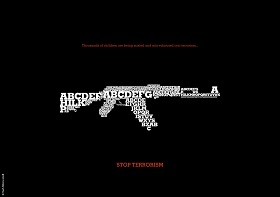Interview
The Internet is actively used by terrorist to inform, motivate and recruit “lone wolf” extremists and terrorists. Online self-radicalization to violence is the rising threat that is very hard to combat. In this interview Daveed Gartenstein-Ross, Director of the Center for the Study of Terrorist Radicalization, discusses reasons behind online radicalization and ways to counter it.
Interviewee: Daveed Gartenstein-Ross, Director of the Center for the Study of Terrorist Radicalization, the Foundation for Defense of Democracies, USA
Interviewer: Maria Prosviryakova, Russian International Affairs Council
The prospects of increasing online radicalization are indeed frightening. The Boston attack is a recent terrifying example of this. What pushes one to start radicalizing online?
Terrorists’ use of the Internet basically mirrors the fact that everybody is using the Internet much more. In the wake of the Boston attack, we heard a lot of discussion of online radicalization, almost as if it is a new and unique phenomena. But I should point out that psychological studies that have looked at online communication, and relationships that are built online, concluded that relationships often deepen faster on the Internet. I think this will be even more true for individuals who have extreme ideas. When you meet someone offline, you don’t necessarily know what they stand for, or if they are going to accept your ideas. If you have fringe ideas—not necessarily ideas that are going to drive you to violence, but fringe ideas—you might find a lot of people who you meet in day-to-day life reject those ideas, and you.
On the Internet, on the other hand, no matter what you believe, no matter how far out it is, it’s not hard to find somebody else who agrees with you. The Internet allows you to be part of a community even if you subscribe to a set of ideas that are extreme—whether they are Islamic radical ideas, white nationalist ideas, neo-Nazi ideas, or radical animal-liberation ideas. People who radicalize online may come across others who are asking similar questions to themselves and developing similarly extreme ideas about the world, or may encounter those who spend time proselytizing for a radical cause.
Are there any major social characteristics of people who are prone to online radicalization?
A large number of them, though not all, are young. People who radicalize online are going to skew young because younger people tend to be more comfortable with Internet communication. Older people tend to be more accustomed to interacting face to face. You can see this generational dynamic a bit in researchers of radicalization. For an older set of researchers, “online radicalization” seems improbable and fantastical: some of these researchers think it is absurd to believe that somebody might radicalize online. For younger researchers, it is much more intuitive that the online environment is actually a welcoming, interactive environment that can create feelings of intimacy.
There is a difference, I should note, between radicalization and violent radicalization. Not everyone who has extreme or radical ideas is going to end up committing an act of violence. Indeed, those who engage in violence are few relative to the large numbers who adopt extreme ideas of some stripe.
When you look at people who have actually engaged in violence, there isn’t a general profile. Socioeconomically, terrorists tend to be neither poorer nor less educated than the population as a whole. They are less likely to be mentally ill than the general population. But, on the whole, a “terrorist profile” is elusive, and likewise it is difficult to define a profile for someone who might be susceptible to online radicalization.
What does the process self-radicalization involve?
First of all, I’m suspicious of the terminology “self-radicalization.” I’m not saying that it never happens, but the assumption that someone who is online is alone, or lacks other people as influences, is simply inaccurate.
That being said, this question is fraught with danger because there is a difference between violent radicalization and radicalization. The former is how people end up accepting ideas that can impel them to violence. But the latter is how people end up with extreme ideas, and ideas that are outside the norm. Those are two very different things, and it is important to keep them separate.
In terms of violent radicalization, several studies have examined the relationship between ideas and violent actions. Representative of this work is Chris Heffelfinger’s radicalization model, which consists of four different stages: 1) introduction to an extremist ideology, 2) immersion in the ideology’s “thinking and mindset,” 3) frustration that other adherents to the ideology are not taking action, and 4) resolve to undertake violence to advance the ideology’s cause. The NYPD’s study Radicalization in the West: The Homegrown Threat, written by Mitchell D. Silber and Arvin Bhatt, offers a similar though not identical model.
However, it is important not to simply assume the primacy of ideology (religious or otherwise) in moving an individual toward the embrace of violence. In my own research on “homegrown” jihadist terrorism in the West, I’ve found that ideology is sometimes the central factor in an individual’s radicalization, while sometimes another factor predominates. I think ideas are an extremely important drive of terrorist violence, but they are not end-all and be-all. There seem to be multiple pathways towards violence, including political anger, group dynamics, and sense of adventure. Though poverty is not a root cause of terrorism in general, in conflict zones it may be a significant factor. As David Kilcullen wrote in his book The Accidental Guerrilla, some people who need to make ends meet for their families may find that the best option for making money is to plant improvised explosive devices (IEDs) for the enemy.
How do people end up accepting extreme ideas and ideas that are outside the norm?
The Internet provides a very good means of facilitating this. I outlined how it could serve as such a vehicle a few moments ago. If one has questions or ideas that may cause them to be shunned in an offline environment, he may look for people online who can speak to these ideas and concerns. Note also that not all ideas outside the norm are bad! Not all ideas that are extreme are necessarily dangerous. A number of ideas that we now accept as conventional wisdom—such as heliocentrism—were once very much outside the norm.
What should governments, communities do to counter online radicalization to violence?
One way the U.S. government has addressed this problem is through the use of sting operations. There are a number of different homegrown terrorism cases in which an individual espousing jihadist ideals has gotten into touch with people who allowed him to take part in a terrorist plot. The other plotters, in a sting operation, are in fact undercover agents testing the individual’s willing to carry on violence. This is a controversial tactic in the United States. Many observers think that it is very wrong to approach the problem in this way, while others defend it, but this is one possible approach.
Another way of approaching the problem is a community-based approach. Basically, the government may partner with people and institutions in the relevant community to try to counter violent ideas. But there isn’t really a silver bullet approach, due to the gap between our understanding of what causes people to accept extreme ideas and what causes them to take the extra step from extreme ideas towards violence. That creates a very thorny problem. On the one hand, we as a society want to allow freedom of expression, and also want to allow people to explore a variety of ideologies and ideas in trying to make sense of this very confusing world; but on the other hand, we also want to protect the public from violence. There are tensions between these two sets of ideals.
Most governments have focused on technical solutions, removing or blocking radicalizing material on the Internet. Can shutting down extremist’ websites be effective?
I don’t think that shutting down extremists’ websites is very effective at all. Several governments, as well as private groups used that approach. They would find extremists’ websites then go to the Internet service provider (ISP), and ask the ISP to shut them down.
One problem here is that it tends to cause migration of the website into other forum. For example, the website will pop back up, but it will be password protected. One impact of causing it to migrate and focus on security is that it might limit the pool of people who take part in it. To some extent that will be effective, the flipside though is that it is truly impossible to regulate speech on the Internet. Of course, there are countries that tried, but it is very difficult to do, especially if you are the country that is committed to the ideals of free speech.
Drawbacks in cooperation between Russian and U.S. intelligence services regarding the Tsarnaev family came to the spot after the Boston tragedy. Some speculate that proper cooperation could have prevented the attack. What measures do you think the international community could take to improve cooperation?
In the Boston case the course of communications is fairly interesting. Russia certainly had more information than it provided to U.S. authorities about the brothers who allegedly carried out the attack. But it is not necessarily a bad thing, because countries that are sharing information about possible violent extremists also want to protect their sources and methods, and do not want to open them during the course of communications.
When one looks at the information that the U.S. was given, it provided only very limited investigatory authority on the part of the FBI. The FBI basically was able to conduct agency check to see if other government agencies had information about the older brother Tamerlan. Then they conducted a face-to-face interview, which was part of the process. It didn’t provide much authority to undertake independent investigation. For example, looking through his emails.
There is always going to be some hesitance on the part of the United States to justify wider investigative authority based on the request of a foreign government. Ultimately, to get a better process of communications any government, that wants investigative steps to be taken, needs to provide information that can justify that investigation.
It does present this tension with civil liberties, on the one hand, when you want to caption the extent to which government can investigate its own citizens based on tips from foreign governments. On the other hand, there is the desire for security, and also interests of governments in protecting their own intelligence gathering options. That creates a set of difficulties in which for the foreseeable future there will be cases that simply fall through the cracks.
Mr. Gartenstein-Ross, thank you so much for this interview.






